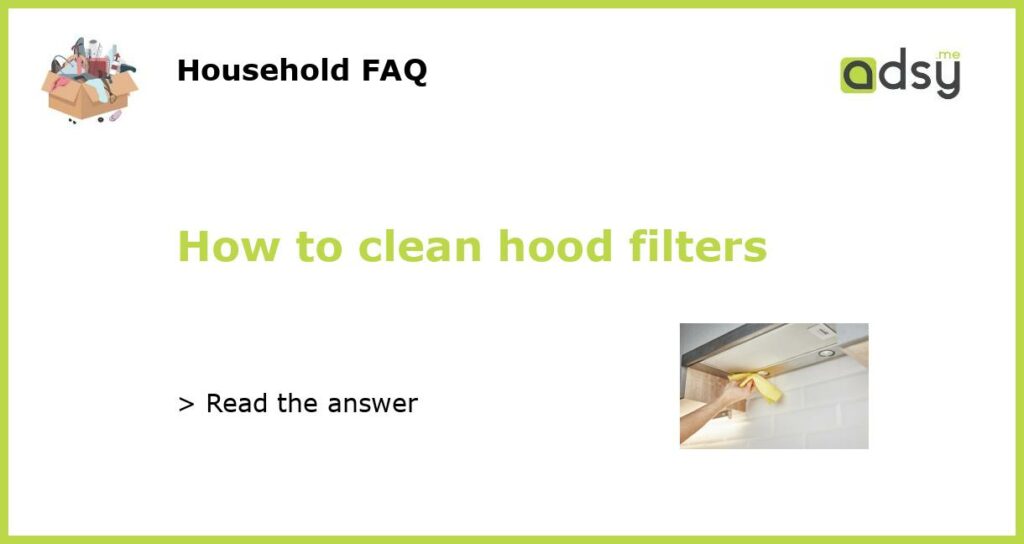Why should you clean your hood filters?
Hood filters are an essential part of a kitchen ventilation system. They help to remove grease, smoke, and odors from the air, keeping your kitchen clean and safe. Over time, however, these filters can become clogged with grease and other debris, reducing their effectiveness. Regular cleaning of hood filters is important to maintain optimal performance and prevent fire hazards. In this article, we will discuss the steps involved in cleaning hood filters and share some tips to make the process easier.
Gather the necessary tools and materials
Before you begin cleaning your hood filters, make sure you have all the necessary tools and materials. You will need a large sink or basin to immerse the filters in, hot water, dish soap or degreaser, a scrub brush or sponge, and a towel or drying rack to dry the filters. Additionally, you may want to wear gloves to protect your hands from grease and debris.
Remove the filters
The first step in cleaning hood filters is to remove them from the hood. This can typically be done by releasing a latch or unscrewing the filters. Once the filters are detached, carefully take them out and set them aside. It is important to handle the filters with care, as they may be greasy and slippery.
Soak the filters in hot soapy water
After removing the filters, fill your sink or basin with hot water and add dish soap or degreaser. Place the filters in the water, ensuring that they are fully submerged. Let them soak for 10-15 minutes to loosen the grease and debris.
Scrub and rinse the filters
After the filters have soaked, use a scrub brush or sponge to gently scrub away any remaining grease and debris. Pay close attention to any particularly dirty areas. Once you have thoroughly cleaned the filters, rinse them under warm water to remove any soap residue. Make sure to rinse both sides of the filters to ensure they are completely clean.
Dry and reattach the filters
After rinsing, carefully dry the filters using a clean towel or by placing them on a drying rack. Make sure they are completely dry before reattaching them to the hood. Wet filters can trap moisture and breed bacteria, so thorough drying is important.
In conclusion, regularly cleaning your hood filters is essential for maintaining a clean and safe kitchen environment. By following these steps and taking the time to properly clean your filters, you can ensure optimal performance and reduce the risk of fire hazards. Remember to gather the necessary tools and materials, remove the filters, soak them in hot soapy water, scrub and rinse them, and finally, dry and reattach them. With a little effort and regular maintenance, your hood filters will continue to keep your kitchen clean and safe.






